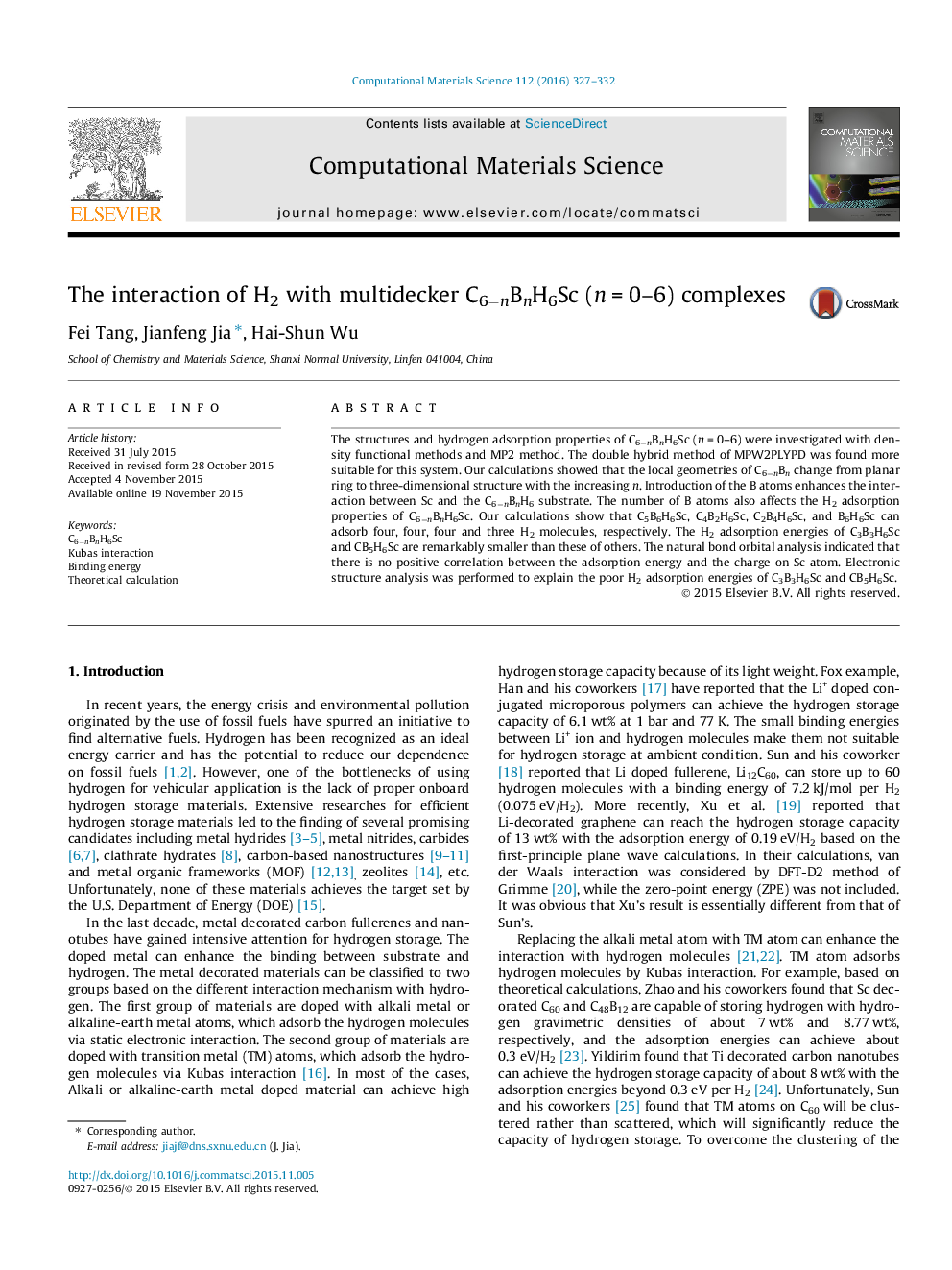| Article ID | Journal | Published Year | Pages | File Type |
|---|---|---|---|---|
| 1559972 | Computational Materials Science | 2016 | 6 Pages |
•The structures and hydrogen storage properties of C6−nBnH6Sc (n = 0–6) units were theoretically investigated.•The double hybrid method of MPW2PLYPD was found more suitable for Kubas interaction.•Introduction of the B atom enhances the interaction between Sc atom and the C6−nBnH6.•C5B6H6Sc, C4B2H6Sc, C2B4H6Sc, and B6H6Sc can effectively adsorb four, four, four and three H2 molecules, respectively.
The structures and hydrogen adsorption properties of C6−nBnH6Sc (n = 0–6) were investigated with density functional methods and MP2 method. The double hybrid method of MPW2PLYPD was found more suitable for this system. Our calculations showed that the local geometries of C6−nBn change from planar ring to three-dimensional structure with the increasing n. Introduction of the B atoms enhances the interaction between Sc and the C6−nBnH6 substrate. The number of B atoms also affects the H2 adsorption properties of C6−nBnH6Sc. Our calculations show that C5B6H6Sc, C4B2H6Sc, C2B4H6Sc, and B6H6Sc can adsorb four, four, four and three H2 molecules, respectively. The H2 adsorption energies of C3B3H6Sc and CB5H6Sc are remarkably smaller than these of others. The natural bond orbital analysis indicated that there is no positive correlation between the adsorption energy and the charge on Sc atom. Electronic structure analysis was performed to explain the poor H2 adsorption energies of C3B3H6Sc and CB5H6Sc.
Graphical abstractFigure optionsDownload full-size imageDownload as PowerPoint slide
